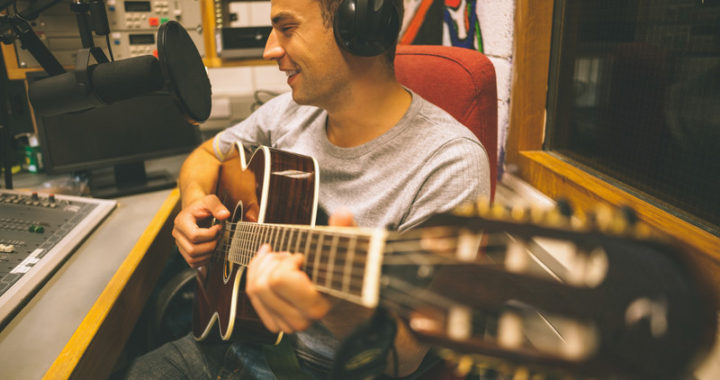There’s a quick answer to why you’d ever use a pre-chorus in your song: by the time you get to the end of the verse, it feels too soon for the chorus.
A pre-chorus is that little optional section that sits in between the verse and chorus. Choruses tend to be more energetic than verses, and so a pre-chorus’s job is mainly to build some momentum and musical energy at the end of the verse so that it more smoothly connects to the chorus.
 When a song you’re composing doesn’t sound right, you can almost always blame some aspect of it form. If you’re not sure how form makes a song work, that’s what the first 3 chapters of “The Essential Secrets of Songwriting” explains. Get the entire 10-eBook bundle, along with a free copy of “Creative Chord Progressions”
When a song you’re composing doesn’t sound right, you can almost always blame some aspect of it form. If you’re not sure how form makes a song work, that’s what the first 3 chapters of “The Essential Secrets of Songwriting” explains. Get the entire 10-eBook bundle, along with a free copy of “Creative Chord Progressions”
That job, of building energy, is often why you’ll see a pre-chorus sometimes referred to as a rise or a build. Like a song’s bridge, it is optional. Not every song needs one, and not every song should use one.
Does Your Song Need a Pre-chorus?
How do you know if your song would benefit from having a pre-chorus? If your verse is short, or otherwise melodically or harmonically unadventurous, a pre-chorus can add a bit of time, musical energy and musical interest before the chorus happens.
If you’ve added a pre-chorus to your song, it absolutely needs a reason for being there. If your verse doesn’t build the necessary energy, or if the melody stays low, then jumps up at the start of the chorus, a pre-chorus would help that situation.
I’ve often used “Firework” (Katy Perry, Mikkel S. Eriksen, Tor Erik Hermansen, Sandy Wilhelm, Ester Dean) as a model for what a pre-chorus can do. Not because I particularly like the song, but because it clearly demonstrates how a pre-chorus should work. You can hear the melody rising to meet the chorus. You can hear musical energy building. It serves a purpose.
How to Build Musical Energy
And so if you’ve decided that your chorus is simply happening too soon, and you think that a pre-chorus would solve that, here are the characteristics most pre-chorus sections should display:
- The pre-chorus chord progression should end by connecting smoothly to whatever the chorus starts with. If your chorus starts on a tonic (I) chord, your pre-chorus should end with something that makes the I-chord sound like an important target. Example: if your chorus starts this way: I vi IV… you might use a pre-chorus progression that ends this way: ii IV V, or vi IV ii, etc.
- The melody should rise. If your verse melody is already reasonably high in pitch, and you need to build musical energy for other reasons, you might try moving the melody down at the start of the pre-chorus, and move it upward to meet the chorus melody.
- The lyrics should gradually become more emotional. While verses typically describe situations or tell stories, a pre-chorus lyric should switch to being more emotionally intense, and this often tends to be a gradual thing.
- Overall dynamics (volume) should increase. This is part of what helps to generate the kind of musical energy and sense of purpose that a good pre-chorus is known for.
If you’re not sure that your song needs the pre-chorus that you’ve written for it, try this: put your song away for a few days, then when you come back to it, try singing the song by going directly from the verse to the chorus. You’ll know right away that a pre-chorus would be a good addition, if it feels as though the chorus is jumping in too soon, and sounds like too much of a jump in musical energy.
 Written by Gary Ewer. Follow Gary on Twitter.
Written by Gary Ewer. Follow Gary on Twitter.
 Some songwriting problems have quick fixes. Check out the 7 most common songwriting problems (and what to do about them) in “Fix Your Songwriting Problems – NOW!” It’s part of “The Essential Secrets of Songwriting” 10-eBook Bundle
Some songwriting problems have quick fixes. Check out the 7 most common songwriting problems (and what to do about them) in “Fix Your Songwriting Problems – NOW!” It’s part of “The Essential Secrets of Songwriting” 10-eBook Bundle











Can you link some popular songs where a “pre-chorus” is present? I’m not entirely sure I know what the term means. Maybe I’ll know it when I hear it … thanks.
Hi Judson:
“Firework“, which I mentioned in the post, is a great example. The pre-chorus starts at 0’46”. Another good example is “Stuck Like Glue” (Sugarland). That pre-chorus starts at 0’39”. That’s a shorter pre-chorus, but it does the same thing – gives a melodic bit that reaches higher, and presents a chord progression that targets the tonic chord at the start of the chorus.
-Gary
Thank you!!
Pingback: Momentum and Musical Energy: What the Pre-Chorus Does For a Song - The Hit Songwriting Formula | The Hit Songwriting Formula